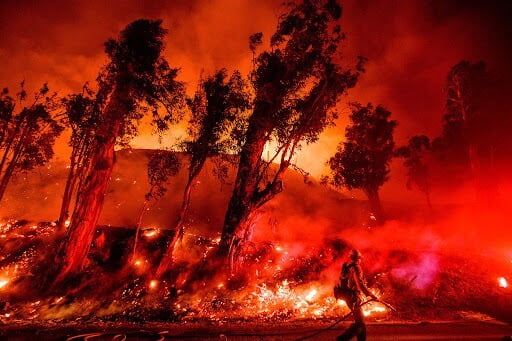A severe thunderstorm watch means that atmospheric conditions in and around the watch area have created a significant risk for the development and intensification of convective severe weather that could exceed the regional severe criterion, and it is usually issued prior to the onset of severe weather.
The National Weather Service (NWS) monitors forecasts and climate data across the United States. When the NWS detects a potentially dangerous weather pattern, it will alert local meteorologists. Because you may not always be near a radio or television, you can keep up with weather changes by following your local news stations on social media, downloading the NWS app, or signing up for NWS text alerts.
What is a Severe Thunderstorm Watch?
Severe thunderstorms are possible in and near the watch area, according to a Severe Thunderstorm Watch.
People in these areas should keep an eye out for potentially hazardous weather conditions and keep an ear out for future statements and warnings. Tornadoes are caused by violent thunderstorms.
Types of storm watches and warnings

Tornadoes
Tornado warnings indicate that severe weather, such as large hail or winds of more than 58 mph, has the potential to develop into tornado activity. A tornado warning indicates that either a strong weather rotation or a funnel cloud has already been spotted. In either case, seek shelter immediately and keep up with local news updates.
Flash Floods
A flash flood warning indicates that even if there is no standing water in your immediate vicinity, you should be prepared for those conditions to change at any time. Flash flood warnings can be issued quickly, indicating that flooding of nearby bodies of water is imminent or has already occurred. In either case, get to higher ground as soon as possible and stay out of the flood’s path — for example, don’t try to drive through large areas of pooling water.
Severe Thunderstorms
A thunderstorm watch, which can last for several hours, indicates that severe thunderstorms are possible. A thunderstorm warning means that current storm conditions, such as heavy rain and strong winds, could worsen. Whether it’s a watch or a warning, it’s best to stay inside and away from windows.
Hurricanes
Whether it’s a tropical storm that’s expected to strengthen into a hurricane or one that’s already formed, a hurricane watch means a hurricane could hit your area. Warnings are typically issued up to three days ahead of time; if one is issued, follow local authorities’ instructions on whether to seek shelter or leave the area immediately.
What Should You Do If There Is a Severe Thunderstorm?
- For the most up-to-date information, tune in to NOAA Weather Radio or local radio or television stations. The best information for your specific situation will be provided by local authorities.
- Golf clubs, fishing poles, tractors, bicycles, and camping equipment are all examples of natural lightning rods. Metal and poles or rods are attracted to lightning.
- If a severe thunderstorm approaches, be ready to seek shelter. During a severe thunderstorm, the best place to be is inside a sturdy building. Avoid gazebos, rain or picnic shelters, golf carts, baseball dugouts, and bleachers that aren’t covered. While many people seek shelter from the rain in these places, they are frequently isolated structures in otherwise open areas, making them a lightning target. Furthermore, gazebos and picnic shelters are frequently poorly anchored and easily uprooted and blown around in strong thunderstorm winds. They also provide little protection against large hail.
If you perceive a severe thunderstorm approaching:

- Secure any outdoor objects that could blow away or cause damage or injury, such as lawn furniture. Bring in any light objects.
- Securely close windows and doors. This will aid in the protection of your home from damaging winds or flying debris.
- Electrical appliances and telephones should be avoided. The wire could be struck by lightning. At this time of year, television sets are particularly hazardous.
- Bathtubs, faucets, and sinks should be avoided because metal pipes can conduct electricity.
FAQs
According to a Severe Thunderstorm Watch, severe thunderstorms are possible in and around the watch area.
People in these areas should be on the lookout for potentially hazardous weather conditions, as well as listen for future statements and warnings. Tornadoes are formed as a result of violent thunderstorms.
Tornadoes, Flash Floods, Severe Thunderstorms, and Hurricanes are some types of storm watches.















